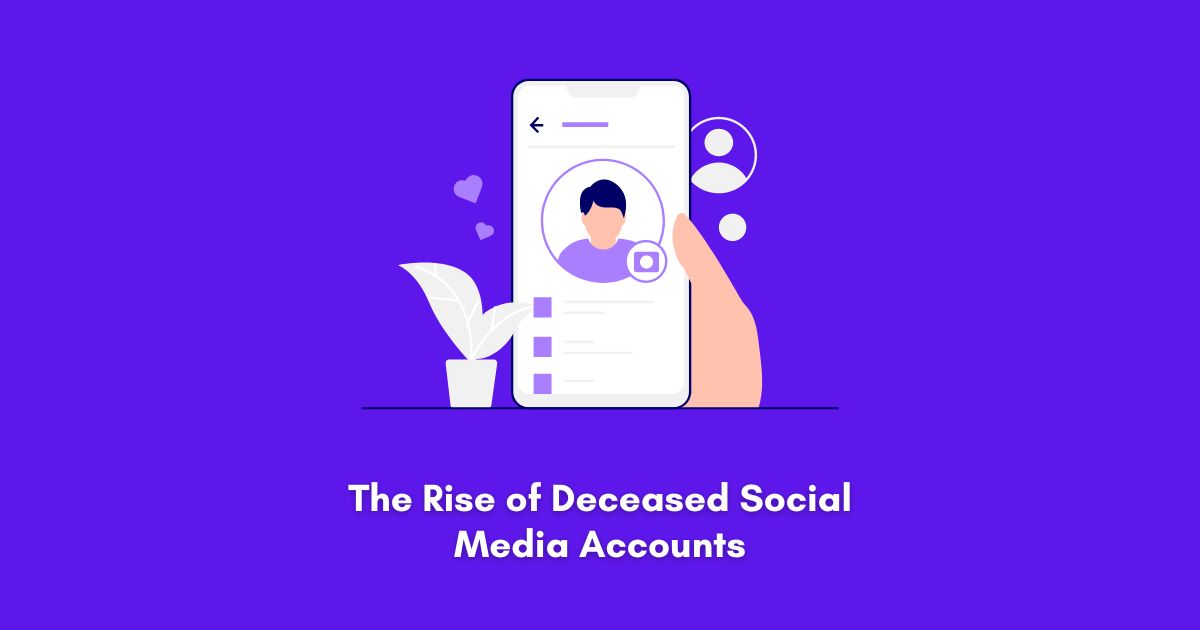The idea of death has expanded beyond physical borders to include a new domain: social media in today’s digitally connected world. The social media presence of departed people has become an important and changing part of our digital landscape as our lives become increasingly integrated with digital platforms.

Deathbed social media profiles are becoming more common, raising issues with digital legacy, bereavement customs, and the morality of virtual immortality. These issues range from memorial pages to posthumous exchanges.
◉ The Digital Afterlife: Memorializing Deceased Accounts
Setting up memorial sites on social media is one of the most noticeable effects of defunct accounts. These web pages function as virtual memorials, enabling loved ones to connect digitally to exchange recollections, expressions of sympathy, and words of dedication.
Services such as Facebook include memorialization tools, allowing authorized users to take control of the dead user’s account and arrange their digital archive. The rise of deceased social media accounts has prompted the development of such features, providing a structured space for collective mourning and digital remembrance.
In addition to offering a place for the community to grieve together, memorial pages are an enduring remembrance of the deceased person. Long after a user has died away, the images, messages, and conversations that previously filled their timeline work as a digital archive, keeping their memory alive online.
◉ Posthumous Interactions: The Ghosts in Our Newsfeeds
The presence of departed people on social media transcends these official monuments, even while memorial pages provide an organized area for grieving. The profiles of departed users could still appear in friends’ and family members’ newsfeeds, causing unforeseen moments of thought and contemplation.
Emotions ranging from nostalgia to melancholy to consolation might be evoked by these posthumous interactions. It can be heartwarming to see a loved one’s profile appear online, as it can constantly remind them of their existence. When the boundaries between the past and the present become hazy, and we are forced to face the reality of loss in the middle of our virtual exchanges, it may also be a startling experience.
◉ Digital Legacy and Ethical Considerations
Digital legacy and the moral ramifications of online immortality are major concerns brought up by the increase in deceased social media accounts. We need to think about how we want to be remembered online and who should be in charge of our digital presence if we pass away, as our lives increasingly blend with digital platforms.
Because it allows for the potential of continuing communication and memory-keeping after death, some people may find comfort in the concept of a digital afterlife. Concerns over consent, privacy, and the possibility of their online identity being misused after death may make it unpleasant to others.
◉ Navigating the Digital Landscape of Grief
People are finding themselves in unfamiliar territory when it comes to grieving, as the number of deceased people’s social media accounts keeps rising. Due largely to the expanding digital nature of our lives, the customs and rituals around death and mourning are changing, with social media becoming an integral part of this process.
Technology has changed how we grieve and remember our loved ones, from virtual memorial ceremonies to online support groups. Social media allows people to connect and remember, and while some may lament the disappearance of more conventional methods of grieving, others welcome it.
Conclusion: Preserving Memories in the Digital Age
A delicate relationship between technology and mortality in the digital age is highlighted by the rise of deceased social media accounts. Approaching the digital legacy with consideration, sensitivity, and respect for the wishes of the departed and their loved ones is crucial as we navigate this changing terrain.
This phenomenon of deceased social media accounts invites us to consider how technology shapes our understanding of life, death, and the enduring power of memory in the digital age, whether we are memorializing a loved one’s profile, seeing their presence in our newsfeeds, or reflecting on our digital legacy.